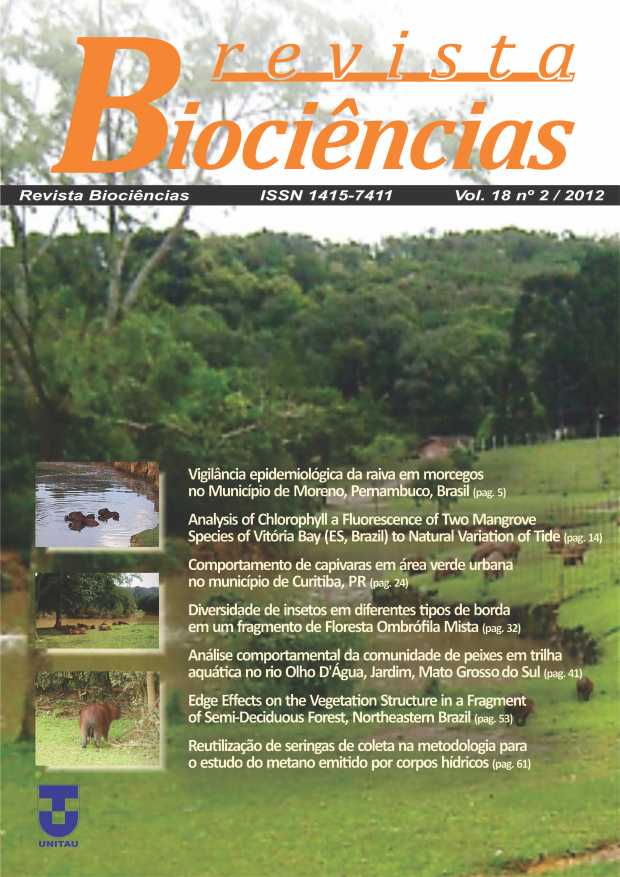Edge Effects on the Vegetation Structure in a Fragment of Semi-Deciduous Forest, Northeastern Brazil
Resumen
Most remaining forests today are small, highly disturbed, isolated, and poorly protected patches of vegetation. Studies on forest fragments increase as an answer to the need of investigating the biodiversity in these areas, providing the basis for future conservation and management proposals. Small forests are considered to be more exposed to edge effects, due to their ratio border-interior. The present study was conducted in a 4-hectare forest remnant located in a sub-humid climate area in Northeastern Brazil. Along the margin, six points were marked, apart from one another by 15 meters. From these points, perpendicular to the edge, 100-meter transects were drawn, in which 7 meters plots of 1 squared meter each were marked every 5 meters. The variables temperature and humidity, number of seedlings and herbaceous plants, herbivory, diameter and number of trees, canopy cover, and litter thickness were measured along the border. The abiotic variables and sum of seedlings and trees, herbivory, and canopy cover were positively correlated with the distance from the edge, whereas DBH, herbaceous sum, and litter thickness showed a negative correlation. The variables revealed an average correlation of approximately 0,70 with the distance measured from edge, some of which seem to be affected by human interference. Since the effect was observed in all abiotic and biotic variables analyzed in the entire edge-interior gradient, this semi-deciduous forest fragment behaves as an edge in its entirety.Descargas
Los datos de descargas todavía no están disponibles.
Métricas
Cargando métricas ...
Descargas
Cómo citar
Diogo, I. J. S., Silva, R. B. e, Morais, E. B., Melo, I. R. S., & Voltolini, J. C. (2013). Edge Effects on the Vegetation Structure in a Fragment of Semi-Deciduous Forest, Northeastern Brazil. Revista Biociencias, 18(2). Recuperado a partir de https://periodicos.unitau.br/biociencias/article/view/1596
Número
Sección
Ciências da Natureza






